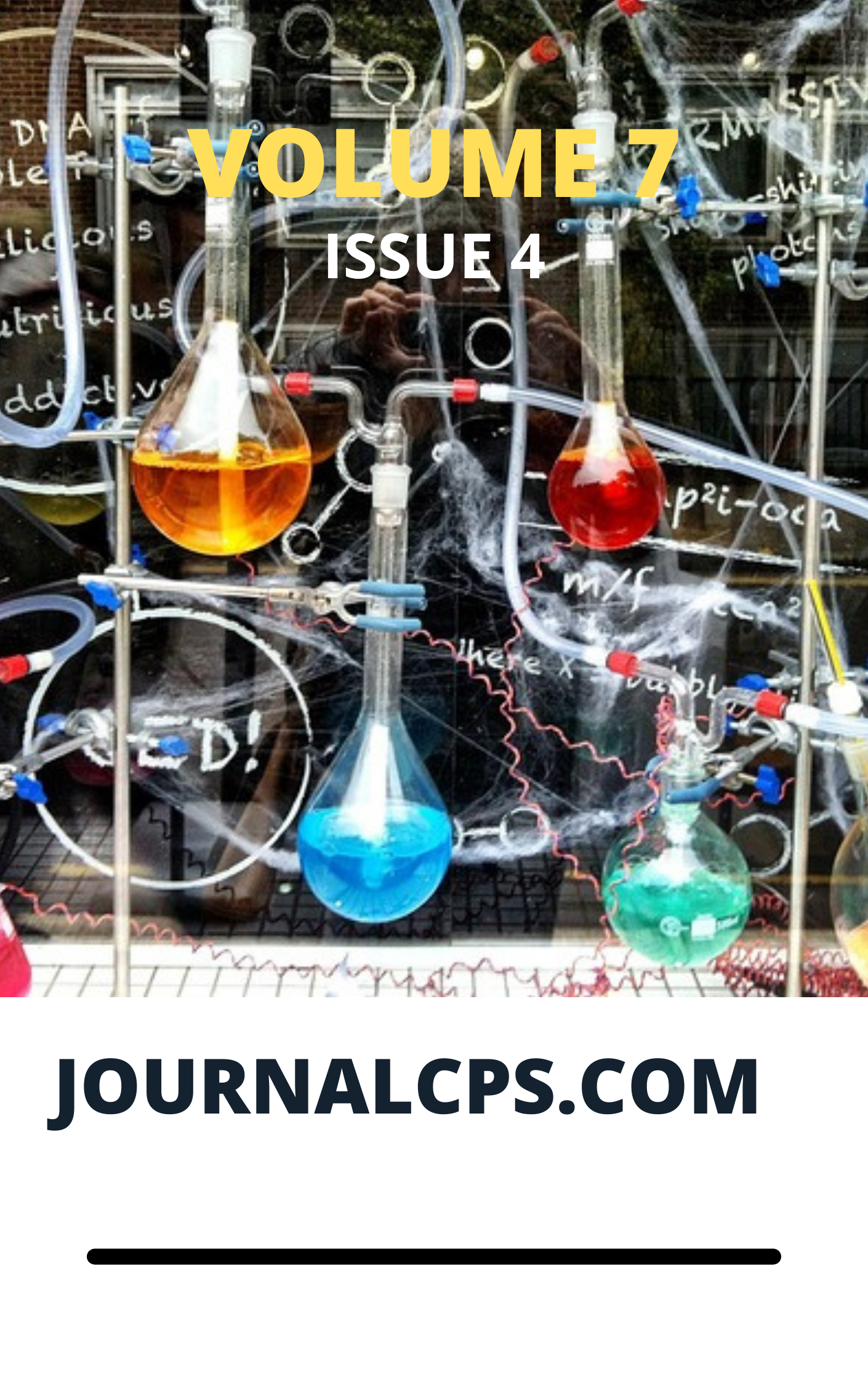Comparative Studies on Phytochemical Constituents Andantimicrobial Activity on Three Onion Species
Keywords:
Phytochemical, antimicrobial, Allium cepa, Allium ascalonicum and Crinum ornatumAbstract
L. Ibrahim,A. Abdulazeez,S. Ummisalma, A. Usman, S. U. Nagenu, U. Badeggi, S. H. Mohammed, A. I. Muhammad and F. B. Salahuu
Several studies have been carried out on the phytochemical constituents of onions, without recourse to the understanding that there are different species of onions (Allium cepa, Allium ascalanicum and Crinum ornatum). This study is designed to determine and compare the phytochemical constituents and antimicrobial activity of different species of onions. Phytochemical analysis was carried out on the different plant samples using wass distilled water, ethanol and chloroform as solvents. The results gotten show that flavonoid, saponin and steroids were present while tannin was present in the ethanol extract and absent in the rest extract. Glycosides were present in distilled and chloroform extracts, alkaloid was present in both distilled water and ethanol extracts but absent in the chloroform extract. Hydroxyl anthraquinone was absent in all three samples Phytochemical data for Crinum ornatum, indicated the absence of flavonoid, tannins and hydroxyl anthraquinone was absent in distilled water extract, for the ethanol extract flavonoid, tannins saponin, glycosides alkaloid were present while steroid and hydroxyl anthraquinones were absent. Flavonoid, saponin, glycosides steroid, and hydroxyl anthraquinones were absent in the chloroform extract while tannins and alkaloids were present. The information obtained for their phytochemical analysis indicated that onion bulbs have some medicinal valuece. The antimicrobial investigations show that the ethanol extracts of crinum ornatum, allium cepa and allium ascalonicumexhibited11.2, 8.9and 8.9mm which is consistent with a zone of high inhibition against the Staphylococcus aureus while the distilled water and chloroform extracts showed minimum inhibitory action. However, Efaecalis ethanol extracts of allium cepa, allium ascalanicum, and cranium ornatumdisplayedthe highest inhibitory action of 4.84.8and 8.2mm respectively for E. faecalis, compared to distilled water, ethanol. For E-colalsohighgh inhibitory zones exhibited ethanol extract of crinum ornatum (8.6 mm), allium cepa (5.8mm) and allium ascalonicum (5.8mm) were also observed., compared to distilled water and chloroform extracts that exhibited inhibitory zones positioned at 18and 4.4 and 4.4 mm for crinum ornatum, allium cepa and allium ascalonicumrespectively. Other active inhibitory zones were also observed and they gave evidence that the different species of onions have certain .antimicrobia properties.
Downloads
Published
Issue
Section
Most read articles by the same author(s)
- A. Usman, Y. Mohammed, H. O. Muhammed, A. H. Zakari, N. L. Usman, Phytochemical Screening and Antioxidant Activity of Balanites Aegyptiaca Root Bark Extracts: Influence of solvent , Communication In Physical Sciences: Vol. 5 No. 2 (2020): VOLUME 5 ISSUE 2
- A. Abdulazeez, N. C. Nwokem, I. I. Ibrahim, A. Uthman, H. L. Zubairu, M. Abubakar, Chemical Information from Proximate and Elemental Composition of Acalypha hispida Leaf , Communication In Physical Sciences: Vol. 5 No. 2 (2020): VOLUME 5 ISSUE 2
- L. I. Ibrahim, A. Abdulazzez, A. Usman, U. M. Badeggi, A. I. Muhammad, Comparative Study of the Medicinal Values of Indigoferatinctoria and Gossypium Hirsutum , Communication In Physical Sciences: Vol. 7 No. 4 (2021): VOLUME 7 ISSUE 4
Similar Articles
- L. I. Ibrahim, A. Abdulazzez, A. Usman, U. M. Badeggi, A. I. Muhammad, Comparative Study of the Medicinal Values of Indigoferatinctoria and Gossypium Hirsutum , Communication In Physical Sciences: Vol. 7 No. 4 (2021): VOLUME 7 ISSUE 4
- Akens Hamilton-Amachree , Ngozi M. Uzoekwe, Phytoconstitution and Antimicrobial Activity of Costus Lucanusianus Floral Volatile Extract , Communication In Physical Sciences: Vol. 9 No. 1 (2023): VOLUME 9 ISSUE 1
- Ahmad Rufai Bala, Abdullahi Sahal , Phytochemical Screening and Anti-microbial Properties of Herbal Medicines used for Treatment of Typhoid and Bacterial/Viral Infection in Kaduna State , Communication In Physical Sciences: Vol. 11 No. 1 (2024): VOLUME 11 ISSUE 1
- R. Nasir, PHYTOCHEMICAL ANALYSIS AND ANTIMICROBIAL ACTIVITY OF LEAVE EXTRACT OF Amaranthus spinosus , Communication In Physical Sciences: Vol. 5 No. 1 (2020): VOLUME 5 ISSUE 1
- Chinwendu Olive Ozoeze, Okenwa Uchenna Igwe, Isolation and Characterizations of a Pentacyclic Glycoside from Methanolic Fraction of Allium sativum (Purple Garlic) Bulbs , Communication In Physical Sciences: Vol. 12 No. 3 (2025): VOLUME 12 ISSUE 3
- Onyinyechi Uloma Akoh, Onuchi Marygem Mac-Kalunta, Okoche Kelvin Amadi, Phytochemical Screening and in-Vivo Anthelmintic Activity of Allium sativum Leaf Extract , Communication In Physical Sciences: Vol. 7 No. 1 (2021): VOLUME 7 ISSUE 1
- Joy N. Egbucha, Eze C. Victor, Nlemchukwu N.C. Benjamin, Obikee M. Caroline, Joseph N. Aniezi, Ifeanyi E. Otuokere, Phytochemical, Anti-inflammatory, Antioxidant, Toxicity and Antimicrobial Activities of Sarcophrynium brachystachys (Benth) K. Shum Leaves , Communication In Physical Sciences: Vol. 11 No. 2 (2024): VOLUME 11 ISSUE 2
- Elisha Karu, Buhari Magaji, Fauziyya Aliyu Jibo, Comparative Assessment of the Levels of Some Metal Ions in Soil Rhizosphere of Onion and Onion Bulb (Allium cepa l) Cultivated in Danbam Local Government Area: North East Nigeria , Communication In Physical Sciences: Vol. 7 No. 1 (2021): VOLUME 7 ISSUE 1
- Godwin Enin, GC-MS Profiling of Bioactive Compounds in Methanol Extracts of Spices Used in Ibibio Postpartum Healthcare , Communication In Physical Sciences: Vol. 12 No. 4 (2025): VOLUME1 2 ISSUE 4
- Uduak Irene Aletan, Abraham Gana Yisa, Sunday Adenekan, Abiodun Emmanuel Adams, Antioxidant Properties and Reproductive Health Benefits of Opa eyin Herbal Concoction: In vitro and In vivo Evaluation , Communication In Physical Sciences: Vol. 12 No. 3 (2025): VOLUME 12 ISSUE 3
You may also start an advanced similarity search for this article.




